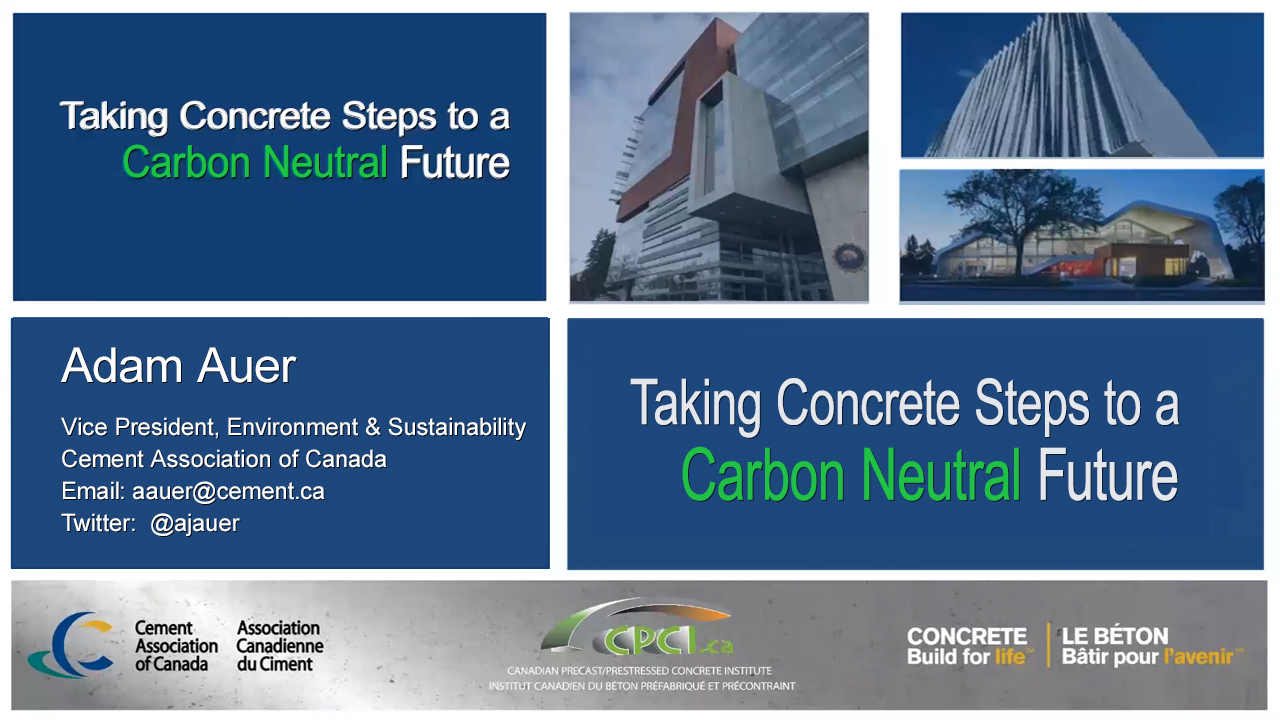Emission Omissions: Carbon Accounting Gaps in the Built Environment

Course Information
Taking Concrete Steps to a Carbon Neutral Environment.
Adam Auer Vice President, Environment & Sustainability, Cement Association of Canada discusses why “embodied carbon” is becoming more important as buildings become more efficient and the role that the cement and concrete industry is playing to reduce GHG emissions.
About the Presenter
Adam J. Auer Vice President, Environment & Sustainability, Cement Association of Canada
Adam has over 15 years experience as a sustainability professional working with public, private and non-profit institutions to promote and enhance concrete’s contribution to sustainability, with a specific emphasis on life cycle approaches to climate change mitigation and adaptation.
He also managed Environment Canada’s Corporate Environmental Innovation initiative - a multi-stakeholder program to promote the business and financial case for corporate environmental leadership and the link between sustainability and an innovative and competitive economy. Adam holds a Masters of Environmental Studies from York University and a Bachelor of Science in Ecology from the University of British Columbia.
Course Objectives
Topics will include:
"Embodied carbon" and what is the construction industry doing about it?
The relationship between cement, concrete and GHG emissions?
Material substitution and Life-cycle Assessment
New research: International Institute for Sustainable Development (IISD) and Wildlands League
What is the cement and concrete industry doing to reduce GHG emissions?
What is your role in reducing embodied carbon in your projects?

